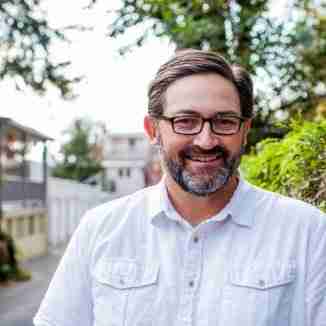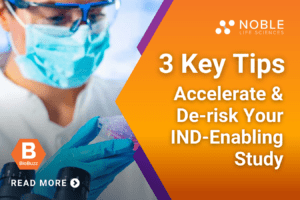
Industry Leaders Outline Five Important Elements Impacting Rare Disease Drug Development
With 7,000 undiagnosed rare diseases, new advancements in gene therapy and a potential $5 trillion dollar market, many are eying this industry to develop new cures.
April 30, 2019
Leaders from AstraZeneca, American Gene Technologies, REGENXBIO, GeneDX, and Jeeva Informatics Solutions recently converged on the newly redesigned 704 Quince Orchard innovation space in Gaithersburg, Maryland for a panel discussion on drug development and rare disease.
Moderated by Moustapha El-Amine, Director, Global Search & Evaluate, Respiratory at AstraZeneca, the rare disease panel discussion was wide-ranging and insightful, addressing topics like orphan drug designation, the relationship between diagnostics and therapeutics, drug development processes and innovation, regulatory challenges, pricing and the role of Big Data and technology in drug development.
Matt Brady, Facility Advisor at Scheer Partners, the event host and sponsor, emphasized the importance of building a scientific community to advance new discoveries and drug development: “When this building was created part of the concept really had to do with getting the life sciences community together and creating a place where everyone could collide and share ideas and help to drive things forward. Seeing people gather at events like this really brings that whole idea to life.”
El-Amine then kicked off the discussion by reminding everyone of the underlying reason for the event: Finding new ways to more effectively diagnose and treat those suffering from some of the world’s rarest diseases. Several panelists shared their personal, family experiences with rare diseases and all universally expressed a deep drive to help rare disease patients and families in need.

“I’ve seen this area really evolve from where it was 22 years ago to where it is today in terms of the biotech/pharma industry with all these great companies coming and locating themselves here. I, myself, have a son diagnosed with an orphan disease and it took us about 15 years to get his diagnosis, and that’s why I’m very interested in learning more about this field,” stated El-Amine.
Diagnosis is just one of many elements that impact this field of medicine. Below we have five of the top factors discussed during the event that are impacting the future of drug development for rare diseases.
1. The Market Opportunity in Rare/Orphan Diseases
The 1983 Orphan Drug Act defined an orphan disease as one that impacts less than 200,000 people in the U.S. To receive an orphan drug designation, a biotech or pharmaceutical company has to demonstrate that the disease it’s targeting meets this requirement. Earning orphan drug status comes with incentives, including drug exclusivity for seven years, tax credits, FDA fee waivers and allowances to write off some R&D costs.
Harsha Rajasimha, CEO of Jeeva Informatics Solutions, emphasized that orphan drugs can be biologics, medical devices, small molecule or a gene/cell therapies and are, contrary to popular opinion, economically viable.
“Unlike the popular belief that orphan drugs are economically not viable, orphan drugs have been demonstrated to be viable through several successful blockbuster drugs which were first approved as orphan for a particular indication and then later approved for several other indications, like Humera, and several others,” stated Rajasimha.
The terms orphan and rare disease feeds the idea that the treatment markets are very small. Taken individually this is certainly the case. However, when taken in aggregate, these terms might are a misnomer when one considers there are 7,000 identified rare diseases globally and that approximately 1 in every 10 people suffers from a diagnosed rare disease, according to Jeff Galvin, CEO of American Gene Technologies, a gene therapy biotech company headquartered in Rockville, MD that has a potential HIV cure on the verge of clinical trials.
Goldman Sachs recently estimated that the rare disease space could be a $5 trillion industry, according to Galvin, which is five times the size of the entire pharmaceutical market,.
2. Rare Disease Treatment Challenges & Diagnostics
Orphan drug development–across small molecule, medical devices, biologics and gene/cell therapies–faces some unique challenges, the most daunting of which might be patient recruitment.
Patient recruitment is an ongoing challenge as the pool of diagnosed individuals is small, which makes the candidate pool inherently limited. Compounding the issue is the reality that many potential trial participants have not undergone genetic screening and therefore cannot be identified at all. Finding and enrolling patients for rare disease clinical trials can be a herculean task in which thousands of potential patients might need to be screened to yield a single clinical trial participant.

Stronger, wider-ranging diagnostic capabilities and more prevalent newborn screening have helped increase rare disease patient identification, which in turn has helped the rare disease drug development effort. The rapid evolution of diagnostic capabilities in recent years has been a true game changer for rare disease drug development.
Sean Hofherr, Chief Scientific Officer at GeneDx, a diagnostic and genetic testing company located in Gaithersburg, MD, perhaps captured the relationship between diagnostic and rare disease drug development best, stating, “There is a really big marriage between the diagnostics and the therapeutics because really you don’t know what therapeutic to use until you know what’s going on with the patient.”
“The field has gone pretty crazy over the last two decades. When our company started we were sequencing single regions of single genes…it was pretty straightforward. And then we realized there are several genes associated with any given disease. PKU (Phenylketonuria), for example, is a constellation of disorders,” added Hofherr. “Then we started testing for a couple genes at a time. And then we had more vague symptoms. This change was happening across the industry. We eventually started testing for large symptom groups.”
“A lot of the genetic testing is actually leading to clues about what needs to be tweaked in gene and cell therapy to start creating new therapeutics,” said Galvin.
“Newborn screening coupled to molecular diagnostics are really what’s allowed gene therapy to take off,” commented Hofherr.
3. Rare Disease Drug Development Process and Cost
While the basic drug development processes are similar for orphan and non-orphan drugs in the small molecule space, gene and cell therapy development represents a departure from what many view as the traditional drug development processes.
“When you’re talking about gene therapy it’s so dramatically different than normal drug development. Typically people think of small molecules, so your Crestor pill or high blood pressure pill…that you have to take daily,” stated Vit Vasista, CFO of REGENXBIO. “When you think of gene therapy, you’re talking about isolating that defective gene, if we’re only talking about orphan diseases, dropping it in our case, into our virus, and then delivering it…since that drug is always ‘on’ because you can’t remove the virus out of the body or that piece of DNA that’s transfected the cell you get the benefit of all the patients enrolled in a trial still carry forward as patients as you move through.”
Vasista noted that for gene therapy development, phases I and II are combined as safety and efficacy are tested simultaneously, which is different from the small molecule process where safety and efficacy are tested across two distinct trial phases. If all goes well in Phase I/II, cell and gene therapeutics move into registration trials where the patients previously included in Phase I/II power the registration for the later trial phases.
The combination of Phase I & II makes gene and cell therapy development less expensive and potentially faster than more traditional development processes. The FDA allows this safety and efficacy combination so gene and cell therapy that permanently changes a person isn’t used in healthy patients. What’s more, the required enrollment for orphan disease trials is far smaller and therefore less expensive and time consuming to run, which is an advantage when combined with the incentives that come along with orphan drug status.

However, Rajasimha noted, many rare disease treatments are still not yet affordable, and it’s very important that industry finds ways to drive prices down to impact the most patients.
Galvin, who has a history in the Silicon Valley tech industry, recognized that many rare disease treatments are still expensive and that prices can vary drastically from disease-to-disease depending on the cost of the particles and materials.
Galvin was optimistic and hopeful that advancing technology will continue to drive prices down.
“What I am witnessing in our part of this industry is that high tech has come to drug development. The capabilities of everything we are doing is doubling every year…it’s like the computer revolution; you’re just getting more power and the price is going down so you’re getting more power per dollar. They’ll figure out ways to reduce the cost substantially and also this could become a very competitive industry where there isn’t just one way to solve a disease, there might be several different genetic angles on the same disease, and there may be multiple companies competing for these markets,” Galvin commented.
“As the costs go down and the competition comes in many of the 7,000 rare diseases will become cost effective to treat,” he added.
What is also important to note is that gene and cell therapy are one time doses for lifetime benefit; these treatments are not taken more than once, typically, so a cost of a $350,000 for treatment is a one-time cost and should be viewed through that lens.
4. The Investment Landscape
The investment landscape for rare disease therapies and specifically gene and cell therapies is evolving and expanding. In 2000, however, gene therapy was completely shut down after a patient died in a clinical trial. After this patient death, big pharma was no longer interested in investing and there was no money to be found.
“When we started the company In 2009, people thought we were the craziest people ever,” stated Vasista. “…but once you saw wins in the space again…getting money became relatively easy. We’ve been able to raise about $400-500 million.” To date, there have been only two AAV viral vector-based gene therapy products approved ever and REGENXBIO is in rarified air as one of only three companies in the world making money on gene therapy.
“If you look at the investor base right now, you can go to VCs and they are willing to jump in a little bit, but they want to know if they’ll get their return in five years. But there’s a whole new class of investors like healthcare-focused hedge funds and mutual funds that have longer investment horizons. Some of the largest investors in the private gene therapy space are T. Rowe Price, Fidelity and Janus…There are new avenues opening up all the time now in addition to more traditional funding options.”
5. Tech, Big Data and Artificial Intelligence
“Big data and AI are putting us in a situation where nothing ever gets thrown away,” said Galvin. “Whatever you sequence is going into a database that can be shared all over the world… Now we have this amazing data set to mine for opportunities or for data that would pinpoint the drivers of a lot of these orphan diseases over time.”

Big data, artificial intelligence and machine learning are also being leveraged to eliminate bottlenecks in the clinical development process. The idea is to use new technology and Big Data to simplify drug development, eliminate bottlenecks that delay the process and find ways to bring the technology and nurses to the patients instead of the other way around.
“At Jeeva Informatics, we’re looking at a clouded and complex marketplace with a bunch of tools and figuring out how we can address this as an end-to-end process efficiency solution,” stated Rajasimha. “All these problems with (clinical trial) recruitment, retention and adherence is where technology can play a huge role.”
Big data, AI and machine learning are having and will continue to have a large impact on drug development in general, including in the rare disease space. The rise of Big Data is happening alongside the gene and cell therapy revolution that is reshaping the drug development landscape as we speak. This revolutionary change is a radical departure from the broad-brush, traditional development approach that is very expensive, time consuming and, at times, random.
“Gene and cell therapy is about directed development. You can create highly targeted drugs that hit a specific cellular pathway and you can even narrow that down using specific promoters or chimeric envelopes so you can direct that drug to a certain cell type or even to a certain disease indicator,” stated Galvin. “By narrowing the drug to the particular tissue or particular disease indicator you are sparing all the healthy tissue, which is the main reason people drop out of clinical trials, the side effects. Gene and cell therapy just avoids this altogether.” The targeted nature of cell and gene therapies will also eventually significantly reduce the tremendous costs of palliative care associated with current disease treatment adverse effects.
Galvin continued, “It’s a whole new world of drug development that is really amenable to these small patient populations and particularly to genetic defects we can pinpoint through more and more data coming from this incredible testing industry evolving around genetics and diagnostics.”
Galvin encapsulated the overall sentiment of the rare disease panelists by saying, “The outlook is incredibly bright.”
An event filled with insightful dialog and marked by a pervasive optimism about the future of rare disease drug development ended with a lively Q&A session driven by an engaged audience eager to learn more about this fascinating and growing segment of the life science industry and the BioHealth Capital Region.
- About the Author
- Latest Posts
Steve brings nearly twenty years of experience in marketing and content creation to the WorkForce Genetics team. He loves writing engaging content and working with partners, companies, and individuals to share their unique stories and showcase their work. Steve holds a BA in English from Providence College and an MA in American Literature from Montclair State University. He lives in Frederick, Maryland with his wife, two sons, and the family dog.






